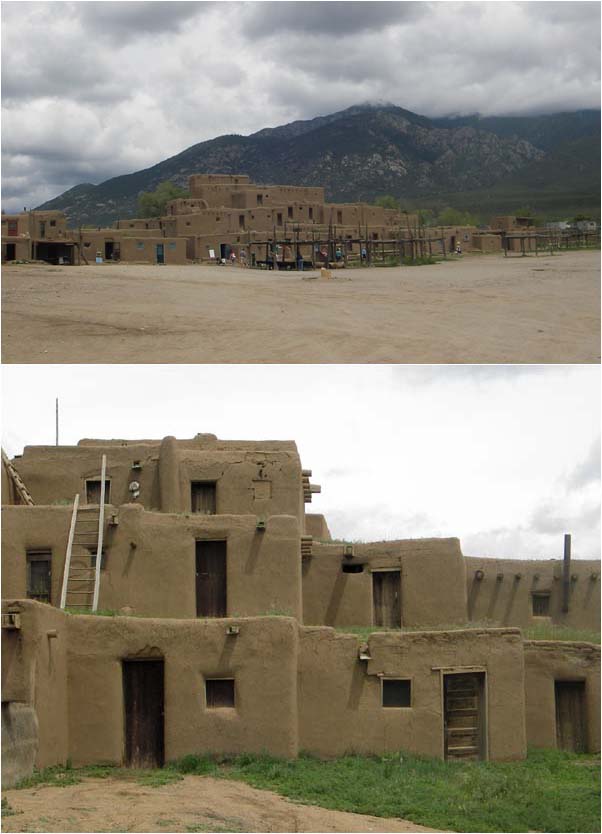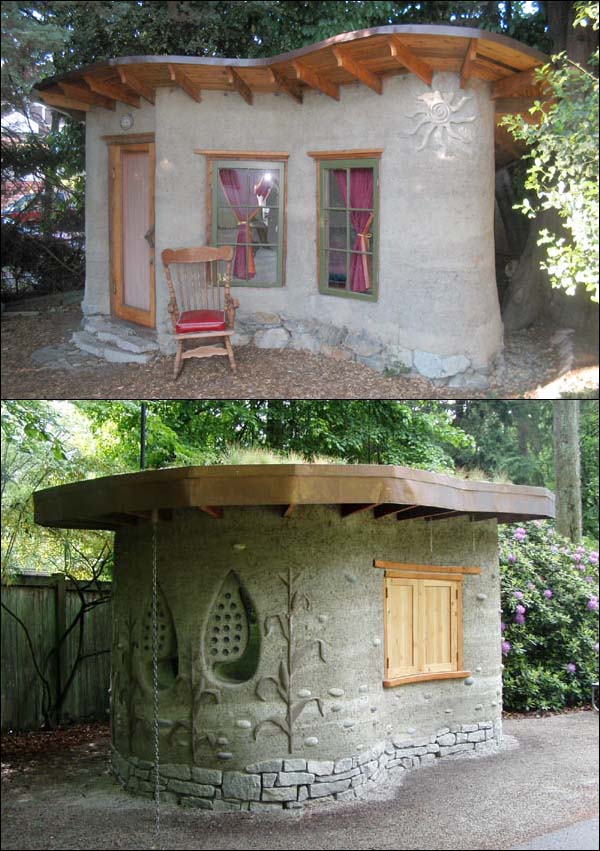Rumble Pie #22
The Healthiest Housing in the World
IN THIS BLOG ENTRY, we're going to look at architecture that is ecological in the extreme. When we present you with examples of super-sustainability, we don't mean to suggest that you should run right out and tear down your own home and build another one in its place made out of more ecological materials. Because of all of the energy that's embedded in the house, and the difficulty inherent in disassembling it and recycling its component parts, it may or not make sense to do all that. But we're presenting you with what's possible when constructing wall systems, because these materials could be used to build outbuildings, or other structures in your yard that could add enormously to your experience of it. So pick up your passports, and prepare to head out on an audiovisual journey all around the earth, to see the healthiest homes made out of the very earth itself.
WHEN I FIRST STARTED STUDYING ecological architecture, I set my sights on straw bales. I'm sure you've heard of these -- by this point straw bale buildings have pretty much completely penetrated the consciousness of even mainstream society. Because the bales are rectangular blocks that are the by-product of an industrial process -- removing the seed from the chaff in wheat fields -- they relatively easily lend themselves to the construction of homes that are also rectangular and industrially-built, the kind that we are used to aesthetically, and have come to demand for reasons of convenience. But if we look past the industrial paradigm, there is another option that is far more ecological. Because it's rough around the edges and demands more people participation, it hasn't been as popular with the masses. But without doubt, it is the material that uses the least amount of fossil fuels and creates the least amount of pollution. This material is mud.
NOW WHEN I SAY THE PHRASE "earthen architecture", the first thing you think of is probably a mud hut. And certainly, mud huts are sterling examples of ecological housing. Everyone in the indigenous village knows how to build and repair one of these out of locally-sourced natural materials. They're adequately warm in the winter and comfortably cool in the summer, without any artificial air-conditioning system. The thatch roofs last just as long as any other modern conventional roofing material; they repel heavy rains for fifteen years or more before they have to be replaced. And they don't off-gas any toxic chemicals, something you cannot say about any industrially-produced building at all. Here is a classic example of a mud hut par excellence in a small Oromo village outside of Addis Ababa. That's Peter on the far right -- we took these photos on a trip to Ethiopia three and a half years ago.

BUT EARTHEN BUILDINGS ARE NOT only the purview of African peoples. For example, the house below is made of the exact same materials as the house above -- clay, sand, and straw... but it was built over 300 years ago in Devon, England! And it isn't a empty, unused museum piece -- the house is still lived in by a family of four, and it's furnished not unlike any other modern dwelling in the UK, as you can see in the interior photograph. We shot these images on the same continent-hopping eco-education trip in the winter of 2006. And this house is not a bizarre exception to the rule; there are over a hundred thousand earth-homes just like it across the United Kingdom that remain in use to this day. So Canadians that trace their direct ancestors to Northern Europe also come from a rich cultural tradition of building healthy houses out of earth.

NOW LET ME BLOW YOUR MIND open even wider: If you think that third-world mud huts and quaint cottages in the countryside are all that earth is capable of as a building material, then you are tragically misinformed! From Ethiopia I flew on to Yemen, the first country in Arabia to become a democracy. Deep in the deserts, there are whole cities that are hundreds, even thousands of years old, dating back from biblical times -- cities filled with earthen skyscrapers! I am not joking -- I went to a couple of construction sites, and they still build in this way, out of sun-dried adobe brick. There are no steel girders or concrete beams; only unmilled wooden poles to hold up the earthen floors above. The walls may be up to a meter thick at street level, but they rise six, seven, or eight stories high -- veritable Manhattans of Mud! I took the photos below, starting from the one in the top-left corner and continuing clock-wise, in the towns of Hajarin, Shibam, and Kataira, respectively.

HERE ON THIS CONTINENT, we have our own native natural building tradition that uses sun-dried earth bricks, as well. During the Arab occupation of Spain, the Spaniards learned of the brick, "al-dob", which they pronounced "adobe". And when the Spanish in turn colonized North America, they brought this building technology along with them to the lands that they conquered. Settlers built the oldest house in the USA that is still standing, in Sante Fe, New Mexico, out of adobe bricks. And when they arrived in the area that would come to be called the southwestern United States, they found that the First Nations people of Taos Pueblo had already been building their homes out of earth for at least five hundred years, by that point. The Pueblo and the whole region still retain their distinct architectural character, even after all this time. I captured these images of the Indian village two summers ago.

OKAY, HAVE I THOROUGHLY proven that earth is a most amazing building material that deserves careful consideration? Well, about twenty-five years ago, a few people on the West Coast were certainly convinced of it. They amalgamated their knowledge of construction techniques from around the world, did research and development into appropriate technologies, and developed the earth building style called Cascadia Cob. The result is essentially the same as all of the other earth sciences -- thick walls of sub-soil muck -- but what sets it apart is that it's often curvilinear, spirallic. Inspired by deep ecology and a counter-culture ideology, these cute little hobbit houses often feature whimsical imagery and sculptural details in bas relief. Here are some photos I took in 2004-5 of home-grown Canadian cob cottages built within the city limits of Vancouver.

PRETTY AWESOME, EH?
|

